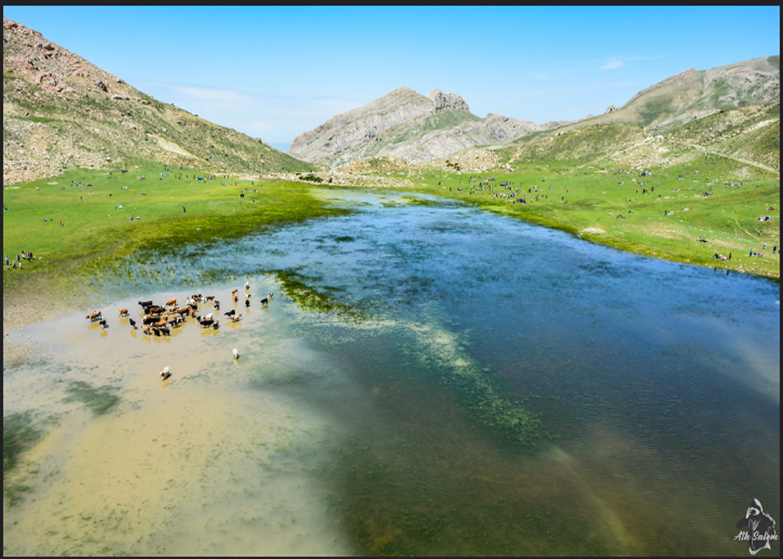Djerjura National Park...a symbol of the tourist magic in Algeria

It is characterized by very important views
Djerjura National Park...a symbol of the tourist magic in Algeria
Djurjara National Park is a natural reserve located in the Djurjara Mountains in northern Algeria. It is located on the northern slope of the state of Tabzi Ouzou and part of the southern slope of the state of Bouira. It is close to the Goraya National Park in the state of Bejaia.
T. Yusef
The Djerjara National Park (18,500 hectares) was established in 1983 to protect it from extinction because it is one of the most beautiful tourist areas in Algeria, especially in winter because it snows and the high peaks are filled with snow from September to May. There are also dense forest areas, gorges, valleys and lakes, and almost all of the animals contained in the park are present. In the national territory, it is therefore diverse and rich, and throughout the enclosure there is a type of bird that is considered a bird specific to Algeria, the Kabylie nuthatch.

The barn is located in northern Algeria, 150 km southeast of the capital, near the Mediterranean Sea. It is therefore located in the Djurdjara mountain range, bordered to the north by the Mediterranean Sea and the state of Boumerdes, to the east by the state of Bejaia, and to the west by the state of Medea. From the south, it is limited to the southern regions of Bouira State, occupying an area of 18,550 hectares.
Geological location and topography
The barn belongs to the tribal belt, where we find it surrounded from east to west by two large rocks, a crystalline rock composed of ancient metamorphic and sedimentary rocks, which were formed from schist rocks. The barn also contains broken terrain with rugged slopes, abysses, and numerous hills, in addition to the presence of piles of rubble and gravel scattered here and there. . The altitude ranges from 1600 m to 1800 m. Its highest peak is Lalla Khadija Peak, 2308 m. It also has the highest lake in Africa, at an altitude of 1667 metres, Lake Akvado in the Tekjda Mountains

A close-up view of the terrain of the Djurjura Mountains
The barn belongs to the humid, mountainous region with cold winters, where the annual rainfall ranges between 1,200 to 1,500 mm. The barn also witnesses a snowy period extending from January to March. Consequently, the region is covered with a blanket of snow that reaches a height of more than two meters in some areas. The region also sometimes witnesses numerous snow storms. However, in the summer, we find that temperatures are moderate compared to other regions of the national territory, where we find that the highest temperature is estimated at about 32°C. The dry season starts from June to September, and the climate begins to turn humid starting in November.
Tribal plants
In the barn there are two adjacent forests, Tijonatin and Tekjda, in addition to the rest of the other plants. Through studies and research conducted on the area, we find that We find that there are types of plants, including mixed cedar and oak, as well as green oaks and cedar forests. These three types correspond with altitude, as we find that green oaks begin to appear at an altitude of 800-1600 m, and mixed forests appear at an altitude of 1300-1900 m. We also find that a large part of these areas has been exposed to burning. During the colonial period, these forests contained oak and cedar, and there were two types, dry and wet. In these forests we find many types of fruits as well as thorny plants. In general, there are about 1,100 types in the barn, 35 of which are original, 70 of which are rare, and 33 of which are protected.

Various animals
The animals contained in the barn are almost all found in the national territory, so they are diverse and rich, as we find carnivorous animals such as: the dog, the red fox, the baboon, and the weasel. As for mammals, we find two types, including the hyena, which is rare, as well as the lynx, in addition to the pig, magu monkey, hedgehog, porcupine, and black rats, and from here we notice There is a great diversity of animals, as we find about 23 species of mammals, 10 of which are protected, and about 122 species of cassowaries and birds, including hawks, eagles, and birds.
Outstanding locations and landscapes
The barn attracts many visitors due to the stunning views it contains, and among the most visited views we find Tekjda, Tala Qilaf, as well as the availability of tourist structures and recreational activities are among the factors that made the region an important tourist site. In addition to this We find that the barn is rich in cultural heritage and traditional works such as jewelry and pottery. Among the archaeological sites is the Haizer Block, which contains two hotels with a capacity of about 600 beds, in addition to the presence of swamps and springs, as well as skiing areas. The Akoker Block is considered the highest place in Jurjura and there are ancient cedar trees as well as black pine trees. This is also the case with the Lalla Khadija block, which is considered the highest block in Djurdjara (2308 m). This place is considered ancient. It is also recommended to visit the Ivri cave, in which we find a mummy dating back to the 14th century AD, like the hideout of Colonel Amiroush. The remains of French warplanes that were shot down by the Mujahideen were found in the area.

The population density in the barn is about 300 people/km², and the area is characterized by intense social and economic activity. There are two villages inside the enclosure, while within its borders there are about 63 villages.
Source: websites

